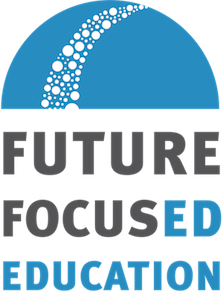What Education and Policing Have in Common
By Landon Mascareñaz | June 25, 2020
It is hard to imagine a more combustible time: the anxious isolation brought on by COVID-19, America’s cold culture war getting hotter, and the constant tragedy of racial discrimination and violence. With the killing of George Floyd, the spark was lit and the dry kindling of our country took aflame.
The cries of protesters and thoughtful leaders make clear: we need to take on pressing issues in policing and racism in this country. In my opinion, we must redesign public institutions to address these issues.
As my friend Everette Hill describes, the “American design dilemma” is that our public system molds were all architected and cast in the fires of 19th and 20th century problems and beliefs.
Our Inherited Systems
Policing, health, education. These legacy institutions we have inherited look to us now as either byzantine-era relics or dystopian visions left unchecked. They are closed systems—not built or created by those they now serve.
This is where education and policing share the same point of origin. Both systems were created by white men to advance white men. Both systems resisted efforts at integration.
Both systems were designed in part to assimilate, dominate and rein in other races and beliefs. If you need direct evidence in education, observe the history of American Indian boarding schools or the persistent experience of Black Americans in our nation’s schools.
In policing, you can trace its roots to the control of Blacks and Native Americans to protect wealthy white property on the eastern seaboard, then moving west to manage the violent impulses of manifest destiny across the continent.
I am no expert in policing, but the similarities to education are striking to me. Both are large public system monopolies, staffed by majority white leadership and controlled by strong unions. They are both essential to a free and modern society, therefore given enormous leeway to produce their outcomes. Our rhetoric of support and admiration regularly fails to meet the reality of pay and prestige, therefore undermining both professions.
Does this mean that design is destiny? Absolutely not. To me, this is the promise of the American dream. That even with this design dilemma, amazing individuals of all races and creeds have created bright lights that have broken through calcified, closed institutions.
Creating an “Open System”
In a more open society, collective aspirations and democratic laws can create imperfect vehicles for progress and unwind injustices that bound our ancestors. To me, that is the power of open systems—they invite in those whom the system is there to serve and ask them to design, create and produce them.
We need real community ownership over these institutions at the local level. We need less giant bureaucracies and more nimble community-responsive structures. It will require opening up education and policing to the communities they serve, and imagining new ways of keeping communities safe that look beyond “big policing.” Leaders must open space, place, and voice for marginalized communities to answer many of these questions themselves or get out of the way. It will require honest conversations with unions about the diversity and biases of the teacher workforce. It will require standing up to police unions. It will require asking them to open their hearts to the plight of their Black brothers and sisters in schools and neighborhoods around the country.
We must ask white Americans to reject a false choice or zero-sum reality between their racial identities’ success and the success of the American project. It will ask them to be a partner in the redesign of America, but no longer the only partner.
The Collective Dream
Where once inequities were the product of design by an exclusive group, a shared liberation can be designed into our systems through shared ownership of our national project. This is our challenge. The ability at every level of our country’s leadership to name this challenge, confront the problem, and guide us will be needed now more than ever.
On the big, important questions that matter, our two Americas feel more apart than ever before. Instead of dreaming together to imagine a shared future, we seem now locked in a shared nightmare where the other side takes control.
Do we even still share the same dream? A dream of a society that rises above its fear and prejudices to create something new and better. Of a society where all men and women are created equal. Or has this collective dream been lost to us?
We see new evidence each day that our Black brothers and sisters were never invited to dream into the American project, but is our collective destiny one of permanent exclusion? Is the effort to include all in the dreaming so new, so frightening, and so ironically at the core of the American project that it risks everything we’ve built?
To dream together is to build together. And to build together is to live together. And to live together is to love together. Our future truly begins or ends with whether or not we love each other enough to build a better society.
And whether or not we still have the love necessary to open both our hearts and systems will be the great question of our time.
A version of this article originally ran in the Colorado Sun.


